Imagine waking up every day to the soothing sound of waves crashing on the shore and the gentle sea breeze on your face. That’s the feeling that coastal interior design style aims to bring into your home. This popular design style is characterized by its fresh, airy, and relaxing ambiance, inspired by the beach and ocean. In this article, we will delve into the key elements of coastal interior design, its various types, and how to achieve the perfect coastal-inspired space in your home.
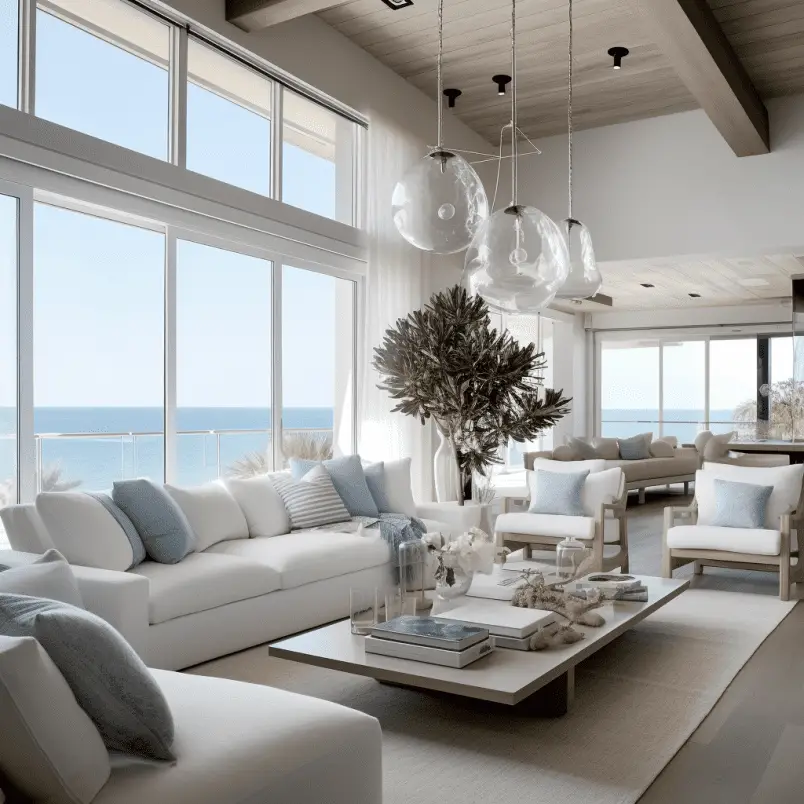
Table of Contents
Key Elements of Coastal Interior Design
To create the perfect coastal-inspired space, you’ll want to incorporate specific elements that embody the essence of the beach and ocean. These include the color palette, textures and materials, furniture, lighting, and accessories.
Color Palette
The coastal color palette is inspired by the beach and ocean. Think of soft, muted shades of blues and greens, reminiscent of the sea, and neutral colors like beige, cream, and white that echo the sand. These colors create a calming and tranquil atmosphere in your home.

Textures and Materials
Natural materials and textures are essential in coastal design. Wood, rattan, wicker, and jute are commonly used for furniture and decor, while linen and cotton are popular choices for fabrics. These materials give your space a casual, laid-back vibe.

Furniture
Coastal-style furniture is all about comfort and practicality. Opt for cozy sofas and chairs with slipcovers in light, neutral colors. Choose furniture made from natural materials, such as wood, rattan, and wicker, to further enhance the coastal feel.
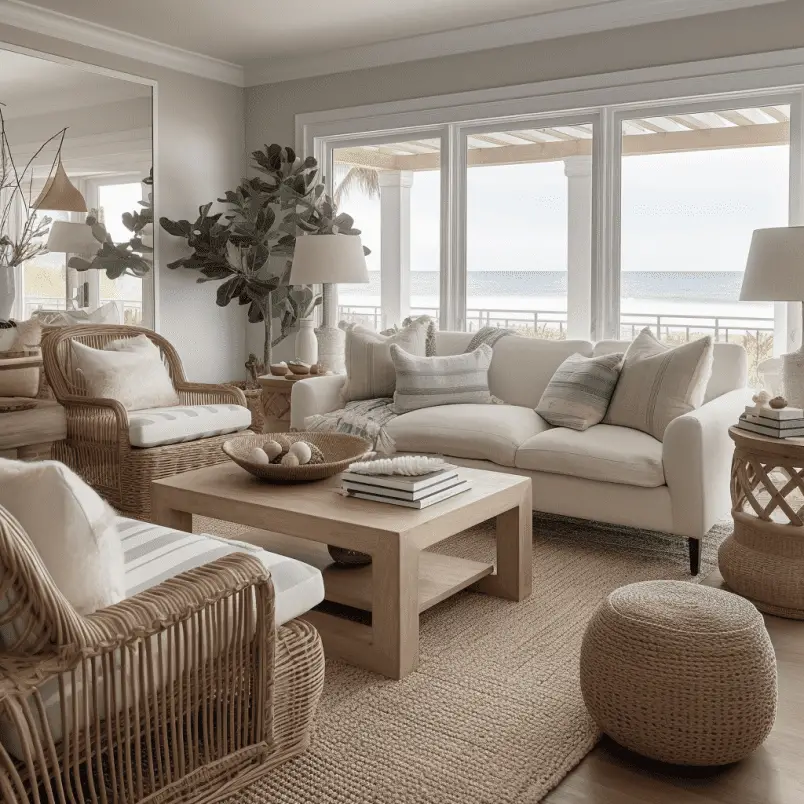
Lighting
In a coastal-inspired space, lighting should be soft and warm to create a relaxing atmosphere. Consider using table lamps with ceramic or glass bases and linen shades, or pendant lights made from natural materials like rattan or woven seagrass.
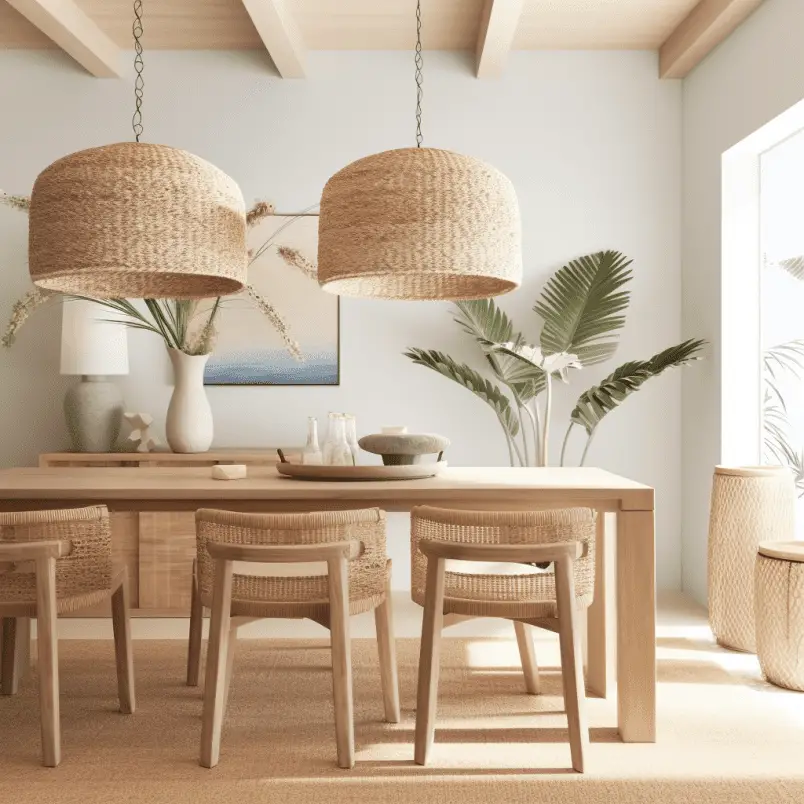
Accessories and Decor
To complete your coastal interior, incorporate accessories and decor that evoke the beach and ocean. This may include artwork depicting seascapes, shells, or coral; coastal-inspired throw pillows and blankets; and decorative items like driftwood, sea glass, or nautical-themed objects.
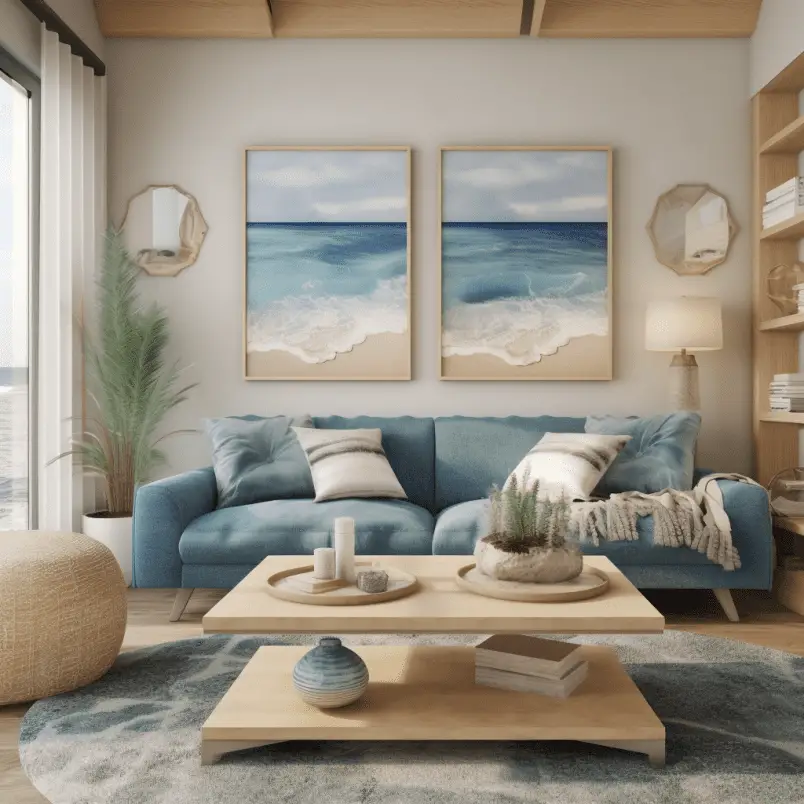
Types of Coastal Interior Design Styles
There are several variations of coastal design styles, each with its unique characteristics. Some of the most popular include American Coastal, Mediterranean Coastal, and Tropical Coastal.
American Coastal
Also known as “Hamptons style” or “Cape Cod style,” American Coastal design is characterized by its elegant and sophisticated look. This style features a predominantly white color palette with touches of navy blue and other nautical-inspired colors. Furniture is often made from weathered wood or wicker, and crisp, white slipcovers are a common choice for upholstery. Accessories and decor often include nautical-themed items, such as anchors, sailboats, and compasses, as well as coastal-inspired artwork and textiles.

Mediterranean Coastal
Drawing inspiration from the coastal regions of Southern Europe, Mediterranean Coastal design is all about warmth, charm, and natural beauty. The color palette features earthy tones like terracotta, olive green, and warm yellows, combined with deep blues reminiscent of the Mediterranean Sea. Furniture in this style is often made from rustic wood, wrought iron, or wicker, and upholstery features rich, textured fabrics like linen and cotton. Decorative elements may include mosaic tiles, pottery, and wrought iron accents.
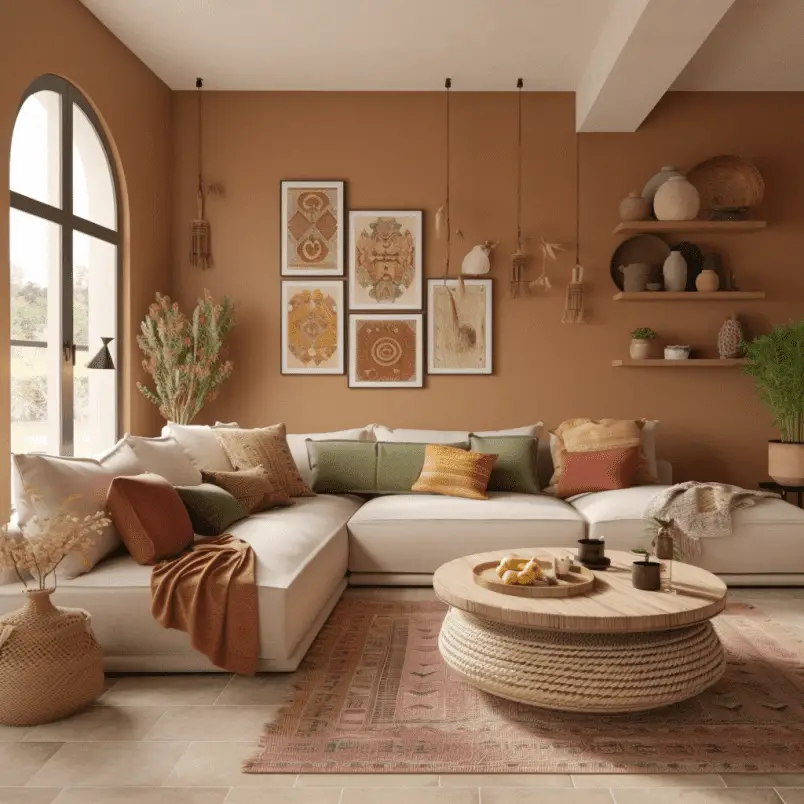
Tropical Coastal
The Tropical Coastal design style captures the essence of a laid-back island lifestyle. This style incorporates vibrant colors, such as turquoise, coral, and lime green, mixed with natural elements like bamboo, rattan, and teak. Furniture is typically casual and comfortable, with an emphasis on outdoor-inspired pieces like hammocks and chaise lounges. Tropical plants, such as palm trees and ferns, are also essential in creating a lush, tropical atmosphere. Accessories and decor often feature tropical motifs, such as palm leaves, exotic birds, and tropical flowers.
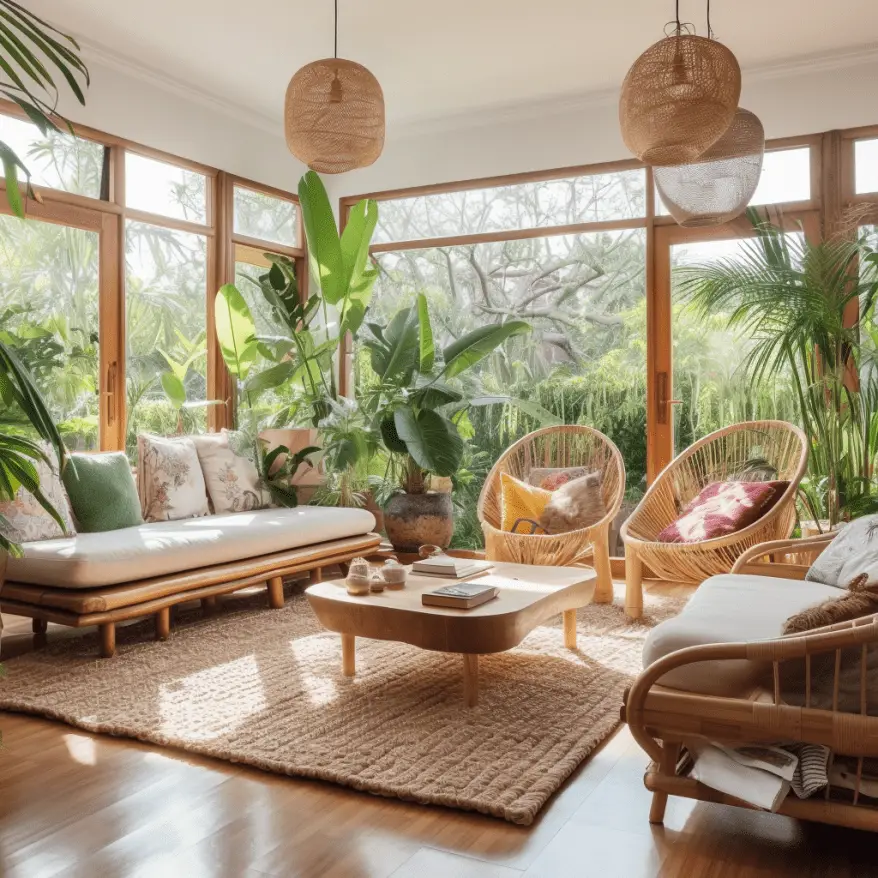
Achieving the Coastal Interior Design Look
Now that you have a better understanding of the different coastal design styles and their key elements, let’s explore how to create the perfect coastal-inspired space in your home.
- Start with a neutral base: Begin by choosing a neutral color palette for your walls, floors, and larger furniture pieces. This will create a calm and soothing backdrop for your coastal-inspired decor.
- Layer textures and materials: Incorporate a mix of natural materials and textures, such as wood, rattan, wicker, and jute, to add depth and interest to your space.
- Choose comfortable furniture: Coastal design is all about relaxation, so prioritize comfort when selecting furniture. Opt for plush sofas, cozy armchairs, and casual dining sets that invite you to kick back and unwind.
- Bring in the outdoors: Embrace the beauty of nature by incorporating plants, flowers, and other natural elements into your design. This will help create a sense of connection to the outdoors and enhance the coastal vibe.
- Accessorize with coastal-inspired decor: Complete your space with artwork, textiles, and decorative items that evoke the beach and ocean. This will help tie your design together and create a cohesive coastal look.
Coastal Interior design in different rooms for inspiration
Coastal interior design is a style that evokes a sense of seaside relaxation and tranquility. It is all about incorporating natural elements, light colors, and textures to create a cozy and inviting atmosphere. Here are some ideas on how to incorporate coastal interior design into different rooms of your home:
Living Room
The living room is the perfect place to showcase coastal elements. Use light-colored furniture such as a beige sofa and pair it with blue and white patterned pillows. Hang a large mirror with a driftwood frame on the wall and incorporate coastal-themed artwork or photographs.

Bedroom
The bedroom should be a relaxing and peaceful space. Use a neutral color palette of white and beige with pops of blue and green to create a calming atmosphere. Add a woven rug and natural wood furniture to complete the coastal look.

Kitchen
In the kitchen, incorporate coastal elements through the use of blue and white ceramic dishes and utensils. Display a collection of shells or starfish in glass jars or bowls. Use natural materials such as a wooden cutting board and woven placemats to add texture.
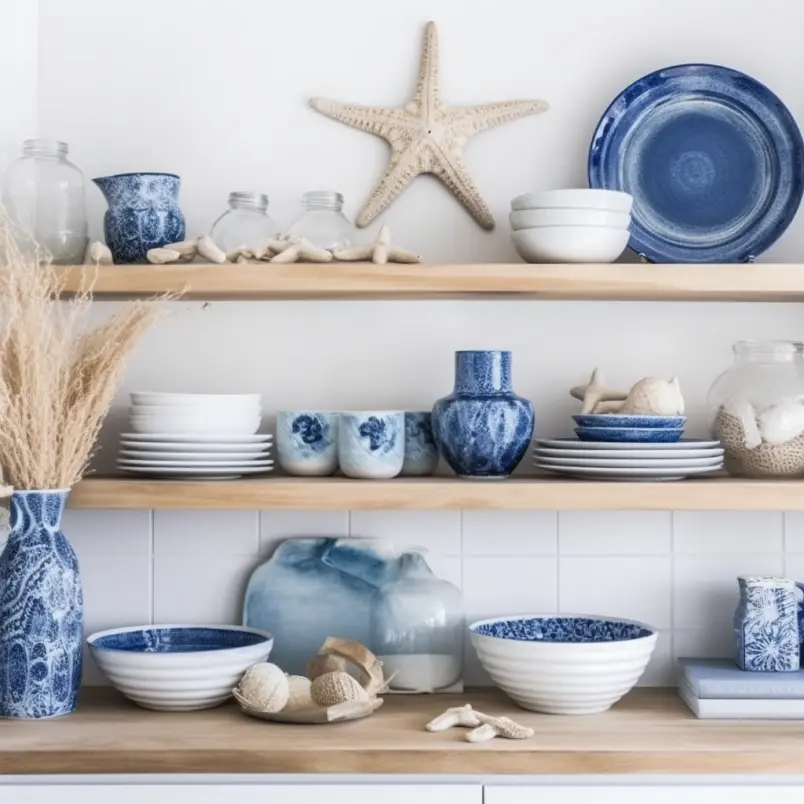
Bathroom
In the bathroom, use light-colored towels and a shower curtain with a beach-inspired pattern. Incorporate seashell accents such as soap dispensers and toothbrush holders. Use a natural wood or woven rug to add warmth and texture.
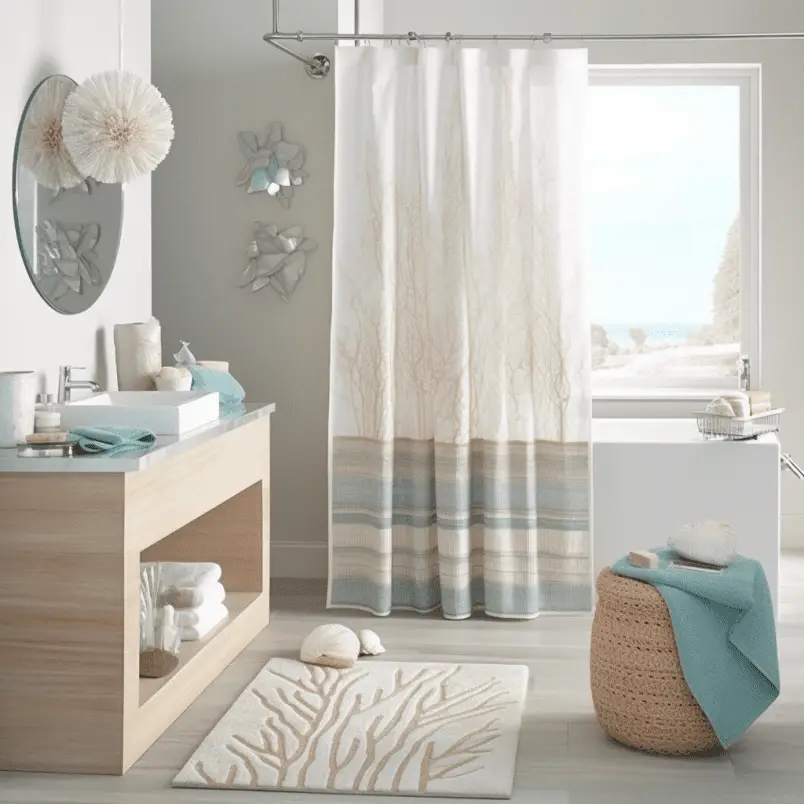
Pros and Cons of Coastal Interior Design
Pros:
- Creates a relaxed and peaceful atmosphere: Coastal interior design often incorporates light, airy colors and natural materials, creating a soothing atmosphere that can help reduce stress and anxiety.
- Adds a natural feel to your space: Coastal interior design often features natural elements like seashells, driftwood, and woven materials that add a sense of nature and the outdoors to your space.
- Versatile design: Coastal interior design can be adapted to various types of spaces, from small apartments to large beach houses. It can also be combined with other design styles, such as modern or rustic, to create a unique look.
- Brightens up the space: Coastal interior design is known for its light and bright color palette, making it an excellent choice for small spaces that need to feel more open and airy.
Cons:
- Can become too theme-oriented: Coastal interior design can easily become too themey and cliche, with too many nautical accents or predictable decor choices.
- Can be too limiting: The coastal design style can be limiting in terms of color and texture choices. Some people may find it difficult to incorporate their personal style into a coastal-inspired space.
- Can be expensive: Coastal interior design often relies on natural materials such as wood, linen, and rattan, which can be more expensive than synthetic materials.
- Requires proper maintenance: Living near the coast or creating a coastal-inspired space can result in a higher level of wear and tear due to the salt and moisture in the air. This means that the upkeep and maintenance of a coastal-inspired space can be higher compared to other design styles.
Conclusion
Coastal interior design is a timeless and versatile style that brings the serenity and beauty of the beach and ocean into your home. By incorporating elements like a soft color palette, natural materials, comfortable furniture, and coastal-inspired accessories, you can create a space that is both stylish and relaxing. Explore the different types of coastal design styles, and let your imagination set sail as you create your perfect coastal haven.
FAQ
What is the main difference between coastal and nautical design?
While both styles draw inspiration from the sea, coastal design focuses on creating a light, airy, and relaxing atmosphere, while nautical design emphasizes a more classic, sophisticated look with strong maritime themes.
Can I mix different coastal design styles in my home?
Absolutely! You can mix different coastal design styles to create a unique and personalized look that reflects your taste and preferences. For example, you might combine elements of American Coastal with Tropical Coastal to achieve a laid-back yet elegant atmosphere
How do I incorporate coastal design into a small space?
To create a coastal feel in a small space, focus on using a light color palette, multipurpose furniture, and plenty of natural light. Incorporate coastal-inspired artwork, textiles, and accessories that don’t take up too much room, and use mirrors to create the illusion of a larger space.
Can I use coastal design elements in an urban apartment?
Yes! Coastal design elements can be incorporated into any living space, regardless of its location. Even in an urban apartment, you can bring in natural materials, light colors, and coastal-inspired decor to create a tranquil, beach-inspired retreat.
How can I make my coastal interior design more eco-friendly?
Opt for sustainable materials like reclaimed wood, organic fabrics, and energy-efficient lighting. You can also incorporate eco-friendly decor, such as driftwood, recycled glass, and upcycled items. Look for furniture and accessories from brands that prioritize environmentally responsible practices and support local artisans.
